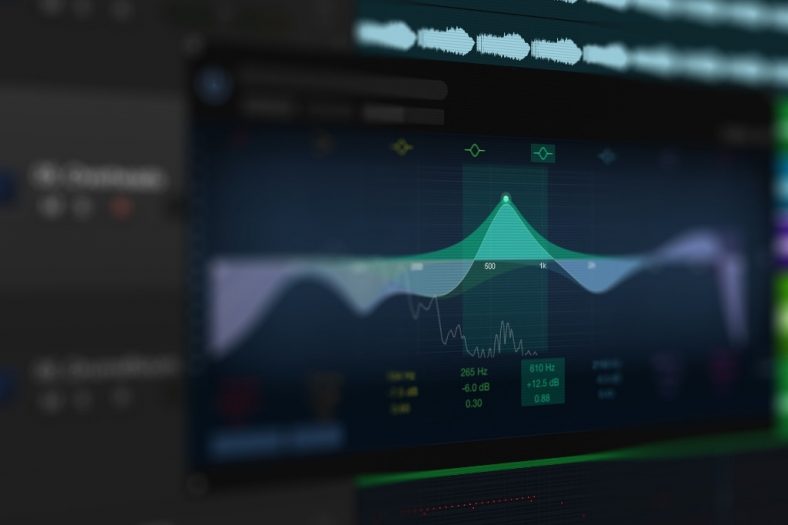The Loudness War Explained

The loudness war is a trend in music, which is the need to raise a recorded track’s audio levels above the maximum amplitude limits to exceed them and has a detrimental impact on sound quality and interest to the listener at hand.
While this tendency was already in use during the mastering process of 7″ singles in the 1940s, it became almost a standard in music production throughout the 2000s, causing a lot of controversy and concerns among producers.
As we will highlight in a bit, increasing the loudness of a song could result in worse audio quality, although the technology now available presents a lot of aids in this sense.
How did the loudness war originate? And why did it become a trend? Is it positive or not for production quality? Let’s find out.
Contents
The Loudness War – At A Glance
- The loudness war originated with the need to stand out on jukeboxes and radio in the 60s and 70s, pushing producers to increase the volume of their tracks.
- Overcompression sacrifices dynamics, resulting in dull, static music with distortions.
- Online platforms like Spotify have tried to address loudness discrepancies, putting more pressure on music makers to reduce the loudness of tracks.
- The solution is for artists to prioritize sound quality and dynamic range over extreme loudness to create more enjoyable music.
- The advent of CDs and digital recording allowed for even more aggressive loudness increases through tools like compressors.
Where the Loudness War Began
The advent of compact discs (CDs) resulted in more attention dedicated to loudness during the mastering process. This fresh technology allowed the widening of the amplitude peak of a track through new signal processing techniques, such as compression and equalization.
However, the practice of increasing the loudness of a track was already in use when noisy bars and clubs featured jukeboxes with 7″ vinyl records. This trend resulted in an inducted new need: to stand out, even on the radio or in the popular compilation albums that bloomed throughout the ’60s and the ’70s, songs had to be loud.
That’s exactly how the war began: producers started pushing the volume of their tracks to make them shine and overshadow the others.
Fast forward to our hectic and competitive times: the loudness war seems to fit our context even better. We’ll find out more about how the loudness war affects our music consumption today in a bit.
Now, let’s take just another tiny step back and see how the rise of CDs allowed producers to break the limitations imposed by the vinyl format and to increase the loudness of their tracks even more.
With digital recording processes, tools like compressors, limiters, equalizers, and so on made the loudness of a song potentially infinite. Of course, there is still a limit over which the sound is distorted, but the old boundaries are just a memory.
Compressors, more specifically, are tools designed to increase the amplitude of a track. The digital process to employ it, usually through a plugin, is straightforward to apply, so producers are even more encouraged to use it.
In the 80s and the early 90s, the average song would be at around -16.8 dBFS, but throughout the 90s, the level often increased to -8 dBFS. Quite a rise!
The British band Oasis made massive use of compression techniques in their 1995 album (What’s the Story) Morning Glory? Often indicated as the initiator of the loudness war.
A decade later, the legendary heavy metal band Metallica experienced quite a lot of troubles caused by the loudness of war. Their 2008 Death Magnetic album was so loud it resulted in distortions and clippings (causing the anger of many fans).
Rumor has it that the tracks mastered for the video game Guitar Hero sounded way better than the official CD! Here is a video of a short comparison between the recording on the CD and the recording for Guitar Hero for you to decide!
In the same year, however, the trend started to reverse with Guns’n’Roses’ album Chinese Democracy, mastered with much less compression than other contemporary releases.
What is the current state of the loudness war?

We are experiencing another loudness war fought not just by music producers but also by podcasters. “The louder, the better,” music and podcast producers seem to think, to stand out among the crowd.
Online platforms such as Amazon and Spotify have come up with specific requirements for audio files, often demanding an acceptable loudness level (now set to -14 LUFS, Loudness Unity Full Scale), it’s putting pressure on music makers to properly consider the loudness of their tracks.
However, the streaming platform’s attempts at uniforming the content has actually resulted in some tracks being made louder by their signal processing method.
Platforms such as Spotify drastically changed the way we consume music, shifting the attention from albums to playlists. Playlists often include singles by different artists and releases, resulting in a huge variety of mixing and mastering levels.
For this reason, Spotify operates a Loudness Normalization on all the tracks it receives, trying to make their users’ listening experience as coherent as possible.
But why doesn’t louder equal better?
Well, there have been many debates over loudness in modern recordings, and the main criticism goes around two arguments: lack of dynamics and distortion. Many legendary recording industry professionals like Geoff Emerick and Alan Parsons, as well as legendary audio engineers such as Doug Sax, Bob Katz, and many more, think that killing the dynamics for a louder sound is killing music itself. If there is no silence, there can’t be loudness, is their approach.
Also, many musicians like Bob Dylan condemn the loudness approach: “You listen to these modern records, they’re atrocious, they have sound all over them. There’s no definition of nothing, no vocal, no nothing, just like—static.”
Lack of dynamics
One of the main issues with overly-compressed music lies in its lack of dynamics. When we increase loudness, we automatically cut out certain nuances in the mix. There is less definition and more…well, noise. The result could be a more static track, with no sense of motion or build-up.
No punches, just a static, noisy listening experience, which could result in tired ears and unhappy listeners. Over-compressed music often feels dull, motionless, and without emotions.
Distortions
What happened to Metallica in 2008 is not that crazy. Over-compression could result in distortions and clippings, causing a severe and tangible decrease in audio quality.
The use of powerful limiters and other plugins can solve this problem, but often sacrificing dynamics even more.
What’s the solution?

The solution to this problem is quite straightforward: we should stop producing loud, over-compressed music in an attempt to stand out.
As artists, we should make our music shine because of its dynamic range and motion, not because of its loudness.
But, as with any cycle, loudness war is getting to the point that many producers are now holding themselves back from it. For example, one of the greatest-sounding albums of the last decade was Daft Punk’s “Random Access Memories.” The secret behind it was the producer Mick Guzauski, who summarized his approach very briefly: “We never tried to make it loud, and I think it sounds better for it.”
As listeners, we should demand our right to a pleasant listening experience, keeping in mind that less (loud) is more!
There are many different ways to fight against the loudness war and get back the feel, dynamics, and higher-quality recordings. Suppose you want to go deeper into the topic. In that case, you can check these books, which talk about the recording and mastering history with the central theme being the loudness war: Mastering Audio: The Art and the Science, by Bob Katz and Perfecting Sound Forever: An Aural History of Recorded Music, by Greg Milner.
Conclusion
With the current state of the loudness war, music producers are creating more static, emotionless tracks. They are over-compressing their music to stand out among other songs, but this is resulting in deteriorated levels of audio quality.
The solution to this problem is for artists to make their music shine because of its sound quality and dynamic range. As listeners, we should demand our right to a pleasant listening experience.





